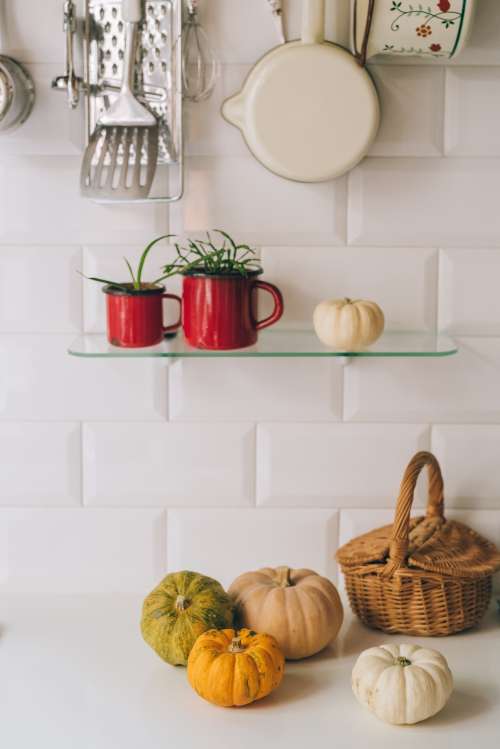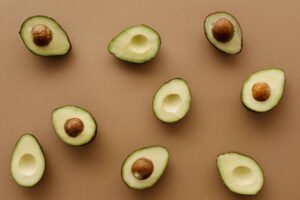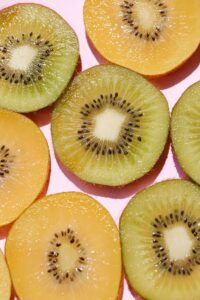Kitchen Makeover
Kitchen Makeover
Get Ready to Make Some Changes
You’ve found your Traffic Lights list of “green, yellow, and red-light” foods. Now, it’s time to give your kitchen a makeover.
That includes getting rid of the four containers of mint chocolate chip ice cream you conveniently “forgot” you had. The salsa that gives you indigestion. The caramel popcorn you got for your daughter’s sleepover that never got eaten. The vegetables that give you gas. Bags of chips you bought on sale. Your stash of peanut M&M’s hidden in the back of your desk. Anything that you have identified as coming from your “red-light” list, it’s time to say goodbye.
Getting Started
The first step to getting a handle on your kitchen is to choose a small area to start with, especially if you get easily overwhelmed. Since we’re talking about edibles rather than dishes and cutlery, perhaps a good place to start is the pantry. The freezer. The refrigerator. The Lazy Susan. A shelf.
Pull everything out of the designated space. Everything. Clean the shelf to signal to yourself that you’re starting over.


What to Look For
Foods past their expiration dates: The first time I got my daughter to help me, she found foods that had expired several years earlier. Oops. Food labels have expiration dates for a reason; you don’t want your food to make you sick. Toss them out.
Junk food: we all have different definitions of what is green, yellow, or red-light food, but the following foods generally do not belong in a healthy kitchen. The more food has been processed, the fewer nutrients it has. Remember that anything you have in your house is eventually going to get eaten by you or a loved one, unless you give it away or throw it out.
These include:
- Candy and Chocolate
- Chips and Crackers
- Sweetened drinks, including any with artificial sweeteners
- Alcohol and mixers
- Instant foods
- Processed fats
- Frozen dinners
Labels: If any of your remaining foods contain high fructose corn syrup, any form of sugar, hydrogenated oil, fractioned oil, or preservatives you cannot pronounce as one of the first three ingredients, get rid of it. If any foods in your “toss” bag are still edible and have any redeeming nutritional value, consider donating them to a local food pantry.
Red-Light Items: Anything that leaves you feeling sick, bloated, gassy, powerless, or craving more does not belong in your kitchen right now. This gets tricky if members of your household all eat different things. If it helps, add a label for who gets what, then stick to it, so you can be sure you’re not digging into that bag of chips at oh-dark-thirty when you know it will give you heartburn in a few hours.
How to Restock Your Kitchen
Now that you have cleared your shelves, what can you eat? It’s time to make a list.
Write down the foods on your “Green-light” list.
See if you can plan three meals’ worth first so you won’t feel panicked.
Next, Precision Nutrition recommends that you start by choosing any three foods from the following categories and add them to your list – fresh or frozen doesn’t matter at this point:

- Vegetables
- Fruits
- Lean proteins
- Nuts/seeds
- Whole grains (oats, quinoa, wild rice, brown rice, sprouted grain bread, amaranth, etc.)
Keep the ingredients real and pronounceable. Choose whole foods over processed (an apple beats apple juice or packaged applesauce any day). Choose single-ingredient foods whenever possible. The fewer ingredients the better.
Add seasonal, organic, and local food items.
Avoid foods with “health benefits” labels like “fat-free”, “low-fat,” and “good for you.” An apple doesn’t need any label.
Where to Go From Here

Once you have completely restocked your kitchen with good choices, you have a few remaining responsibilities:
- Enjoy the choices you’ve made
- Be vigilant about shopping – don’t go grocery shopping when you are “hangry” as those foods you just tossed out might sneak back into your shopping cart
- Explore new recipes, flavors, and combinations by befriending the spice drawer
- Cut, dice, chop, and prepare fruits and vegetables so they truly are “ready to eat.” There’s nothing worse than setting a good intention and discovering that your crisper has become a rotter.





